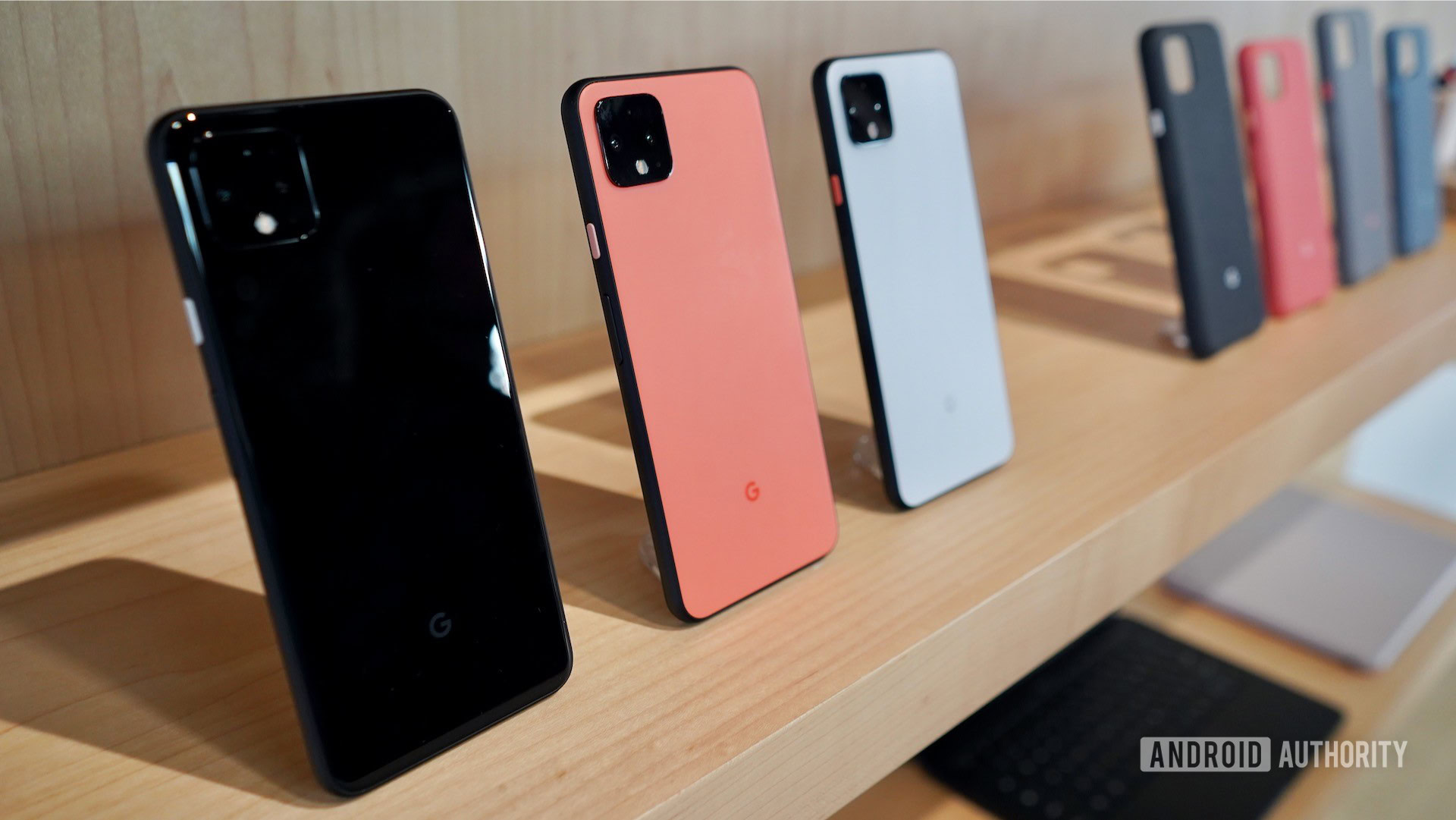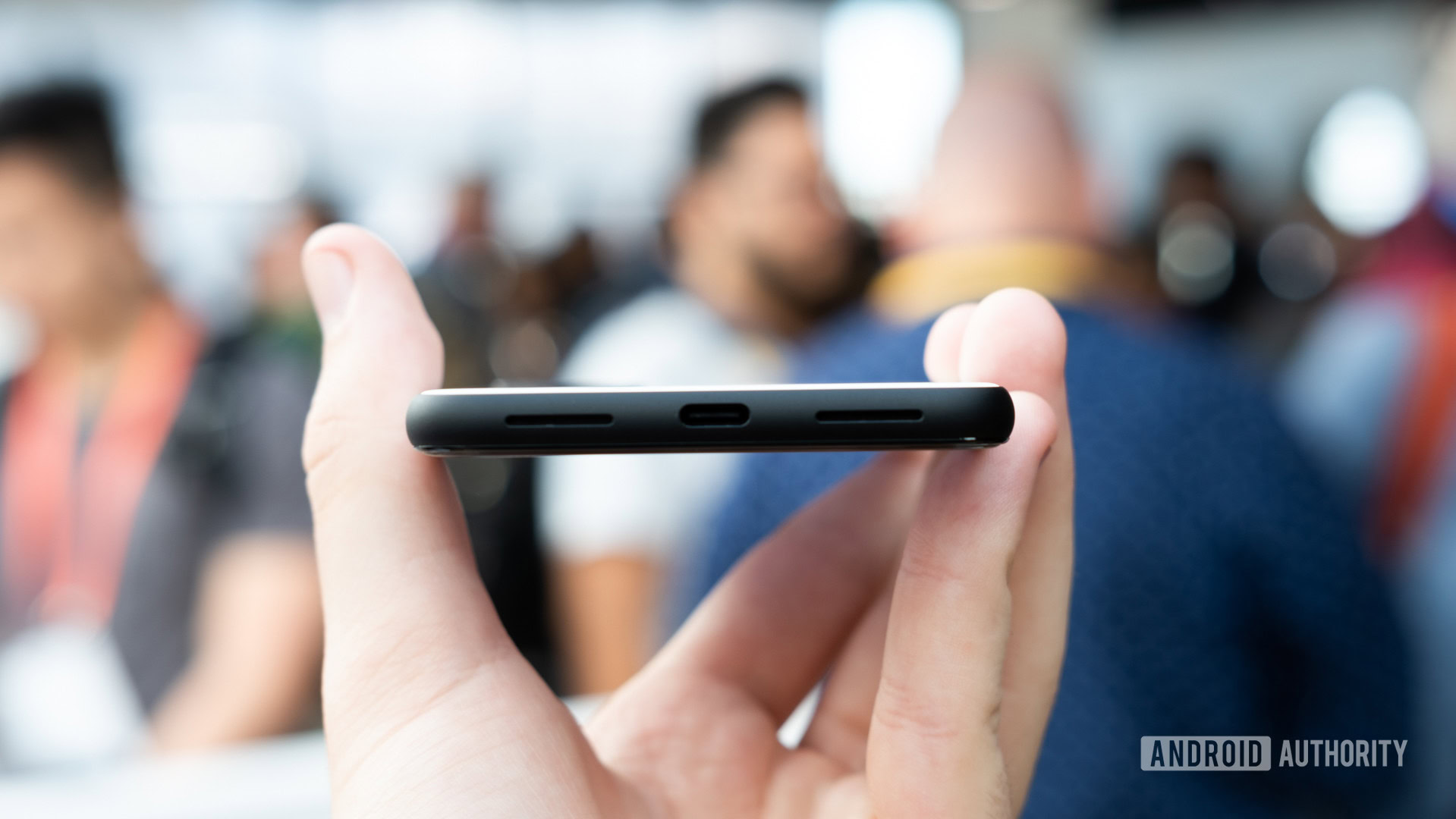Affiliate links on Android Authority may earn us a commission. Learn more.
Google Pixel 4: A 2,800mAh battery?

Here’s an unwanted surprise out of the Google Pixel 4 launch: a 2,800mAh battery on the Pixel 4. That’s tiny!
Google’s Pixel 3 was already bad on battery life with its relatively small 2,900mAh battery. Now the Pixel 4 has 100mAh less than the charge-twice-a-day Pixel 3. This seems like an odd step backward, especially considering the 5.6-inch Pixel 3a offered a touch more at 3,000mAh.
Even Apple’s iPhones, historically known for smaller battery capacities, now have bigger batteries: the 6.1-inch iPhone 11 has a 3,046mAh battery and the iPhone 11 Pro Max packs in a 3,969mAh battery. Paired with Apple’s tight hardware/software integration, the iPhone 11 family has received tons of praise for great battery life. Even the 6.1-inch Samsung Galaxy S10 has a 3,400mAh battery, some 21% bigger than the Pixel 4, and it was not reviewed well for its endurance.
That 90Hz refresh rate display looks great, but it comes at a battery cost.
It’s not that the Pixel 4 looks like it will be frugal with battery life, either. Moving to a 90Hz refresh rate display will add significantly more demand to the battery throughout the day. According to Google, the 90Hz display is on a dynamic refresh rate, so it won’t always be chugging maximum juice and running at 90Hz. But when it is, faster refreshes simply mean more power demand. Just look at our battery life testing of a similar device, the OnePlus 7, in 90Hz mode versus 60Hz mode and you’ll see battery life drop by close to 28% when using the 90Hz refresh rate, according to our stress test.
One more smaller problem: there’s also 2GB more RAM in the Pixel 4 over the Pixel 3. More RAM means more power demands, although after waiting to speak with a friend in power electronics, only very slightly.
Also read: The full list of Google Pixel 4 specs
Google Pixel 4 battery: Is there any hope?

There is one major plus, and that’s the processor. The Qualcomm Snapdragon 855, Qualcomm says, uses around 20% less power than the Snapdragon 845 found in the Pixel 3. That’s likely related to the move from a 10nm fabrication process to 7nm. And, perhaps in a battery life concession, Google stuck with the 855 rather than the overclocked 855 Plus, which only offers some minor improvements with increased clock speed at the sacrifice of battery performance.

There’s also the chance that the Pixel Neural Core on the Pixel 4 — the co-processor that helps with camera image processing and for tricks like the speech-to-text Recorder features — might also scrimp on power. Google’s Soli radar might also consume little power and might be able to reduce unnecessary wake-time, with Google saying the always-on display will actually just turn off if Soli detects you’re not present near the device. So that’s a small saving, potentially, if that’s how Soli works?
At least the Pixel 4 XL has a 3,700mAh battery.
At least the Pixel 4 XL has a 3,700mAh battery, which is 270mAh more than the Pixel 3 XL, but I can’t quite understand why one shrank while the other grew.
The numbers look like they’re worse than ever
With no reviews out yet, we don’t know if anyone has put the Pixel 4 through a serious battery life test. So, what do we know? First, Verizon’s Pixel 4 page. It, along with other carriers, claims the following: “Up to 24.92 hrs of usage time and up to 9.54 days of stand-by time,” noting as it does for every phone. “Approximate battery life based on a mix of talk, data, standby, mobile hotspot and use of other features, with always on display off. An active display or data usage will decrease battery life. Actual result may vary.”
The Pixel 4 XL, on the other hand, says “up to” 32.2hrs of stand-by time and 12 hrs of usage time.
As a comparison, at Google I/O 2019, Google claimed the Pixel 3 had 30 hours on a single charge. The Verizon page for the Pixel 3 says “Up to 12 days of stand-by time and up to 28.4 hrs of usage time”. Worryingly, both numbers, however calculated, suggest that’s more than the Pixel 4! The Pixel 3 was outright bad for battery life, if not horrible.
If the Pixel 4 is worse, it’s not going to review well. It might have all kinds of camera goodies, but you won’t be able to take many photos before it needs charging. On that note, the Pixel 4 has fast charging, which is good, but it’s only 18W. 18W is still defined as “fast,” but the likes of the Samsung Galaxy Note 10 range cranks 25W fast charging out of the box, while a bunch of smartphones from Chinese brands are at 30W, 40W, and above. 18W is not bad, but it’s not an argument that a big, long-lasting battery isn’t needed. A USB-C battery pack may be mandatory.
At least the Pixel 4 XL still has a chance, but we won’t know until reviews and stress tests emerge. Stay tuned, this 2,800mAh battery in a proper flagship in late 2019 is going to be an interesting story.